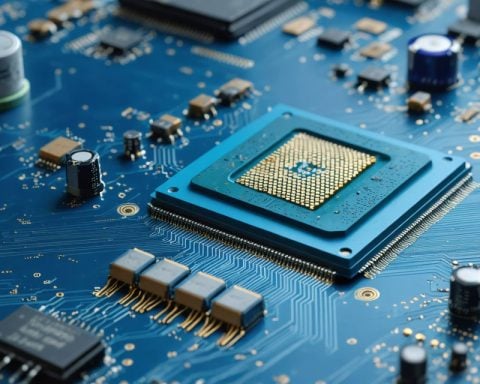The stock market experienced a sharp decline as investors awaited Federal Reserve Chair Jerome Powell’s speech at Jackson Hole, Wyoming. The S&P 500 dropped 0.89% and the Dow Jones Industrial Average slid 0.43%, while the Nasdaq Composite lost 1.67%. Despite trading higher during the session, all three indexes faltered. Additionally, the yield on the 10-year Treasury rose by nearly 9 basis points to 3.862%. In contrast, U.S. oil prices saw a 1.42% increase after erasing most of their gains for the year.
Amid concerns about inflation trends and labor market weakness, Philadelphia Fed President Patrick Harker endorsed an interest rate cut for September during an interview. He suggested the Fed should ease “methodically and signal well in advance,” proposing a reduction of either 25 or 50 basis points. This follows the central bank’s minutes from the last meeting, which expressed growing confidence in inflation trends. Analysts are now anticipating Powell’s speech for further insights.
Peloton, the troubled connected fitness company, reported its first sales increase in nine quarters. The company’s sales rose by 0.2% to $643.6 million, while its losses narrowed to $30.5 million compared to the previous year. Peloton’s shares surged up to 40% after the earnings release, indicating a positive response from investors.
The Food and Drug Administration has approved updated Covid vaccines from Pfizer and Moderna, targeting the KP.2 strain. Although the strain was dominant in May, it now accounts for about 3% of cases. Both drugmakers claim the KP.2 jab can produce a stronger response against other variants. This approval comes during a summer surge of the virus.
General Motors’ Cruise has struck a partnership with Uber to offer driverless rides to users as early as next year. Cruise aims to revive its robotaxi venture after a serious accident last year. Uber also joins forces with other developers like Google’s Waymo, having abandoned its own self-driving project.
As Powell prepares to deliver his highly anticipated speech, traders and investors await further clarity on the expected rate cut in September. While some argue for a more aggressive approach, others believe the Fed should exercise caution to maintain the economic expansion and contain inflation. The market’s rate cut forecasts for the next year are seen as overly dovish by some, given the current state of the economy. Despite differing opinions, the Fed’s data-dependent approach has faced criticism for potential negative impacts on the economy and stocks.
Additional relevant facts:
– The stock market dip ahead of Powell’s speech reflects the market’s sensitivity to the Federal Reserve’s monetary policy decisions.
– Investors are closely monitoring economic indicators such as inflation trends and labor market data to gauge the need for a rate cut.
– Powell’s speech at Jackson Hole is a highly anticipated event as it may provide insights into the Fed’s stance on interest rates and its outlook on the economy.
– The yield on the 10-year Treasury bond rising indicates a potential expectation of higher interest rates in the future.
– Peloton’s positive earnings report and stock surge indicate investor confidence in the company’s performance and potential for growth.
– The approved Covid vaccines targeting the KP.2 strain highlight ongoing efforts to combat the virus and adapt to new variants.
– General Motors’ partnership with Uber in the driverless rides sector demonstrates the continued development and adoption of autonomous vehicle technology.
Key questions and answers:
1. What impact could Powell’s speech have on the stock market?
– Powell’s speech may provide clarity on the Fed’s stance on interest rates and its assessment of economic conditions, which could influence investor sentiment and market expectations.
2. Why are investors anticipating a rate cut?
– Investors anticipate a rate cut as a potential measure to stimulate economic growth, especially amid concerns about inflation trends and labor market weakness.
3. What are the advantages of a rate cut?
– A rate cut can potentially boost consumer and business spending, lower borrowing costs, and stimulate economic activity.
4. What are the disadvantages of a rate cut?
– Some disadvantages of a rate cut include the risk of fueling inflationary pressures, reducing the effectiveness of future rate cuts, and potentially encouraging excessive risk-taking behavior in financial markets.
Key challenges and controversies:
1. Balancing economic expansion and inflation containment:
– The debate centers around how aggressively the Fed should approach rate cuts to support economic growth while also ensuring inflation remains under control.
2. Forecasting the impact on the economy and stocks:
– There is ongoing disagreement among market participants regarding the potential effects of rate cuts on the economy and stock market, with some expressing concerns about potential negative impacts.
Suggested related links:
– Federal Reserve
– Reuters – Business Markets
– Bloomberg – Financial Markets



















